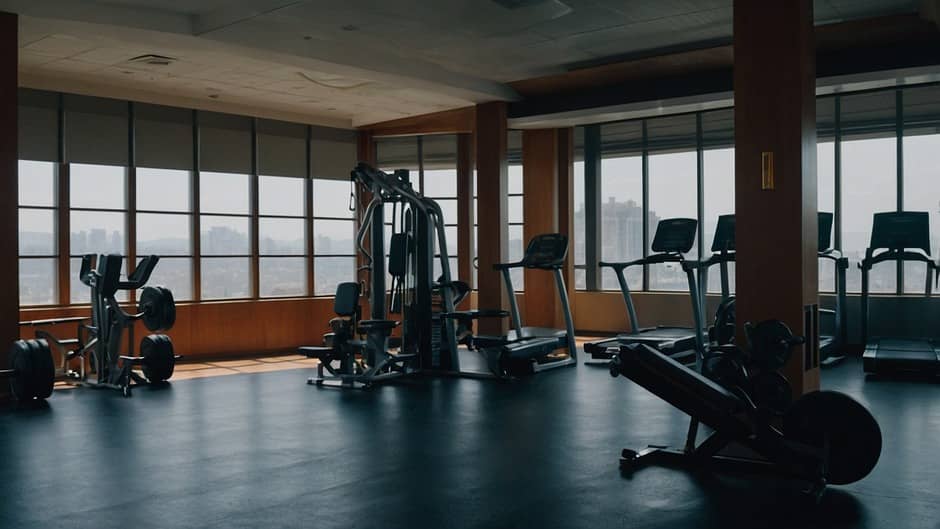Table of Contents
- Knee Pain From Playing Soccer
- Why Young Football Players Often Experience Knee Pain?
- Why Does My Knee Hurt When I Play Football?
- Why Football Players Often Struggle with Knee Problems?
Knee Pain From Playing Soccer
If you have ever played soccer, or “football” as many refer to it around the world, you are probably aware of how serious the game can be.
It moves quickly, gives you energy, and keeps you alert, or more accurately, squatting down.
The most common question is what causes knee joint pain and swelling?
Anyhow, occasionally, all that sprinting, jumping, and sudden changes in direction might be bad for your knees. You’re not alone if you’ve experienced that kind of dull or intense agony during or after a workout.
It’s critical to comprehend the reasons of knee pain if you hope to enjoy your favorite sport pain-free for years to come.
Why Young Football Players Often Experience Knee Pain?
You see, you might not think much about the physical impact a game puts on your body when you’re young and energetic.
Nonetheless, because your knees are among the most vital components of your body for movement, you put a lot of strain on them. Soccer puts a lot of strain on knee joints with its quick runs, sudden pauses, winds, and turns.
Furthermore, any tension might result in pain because the knee is a complex joint made up of bones, ligaments, tendons, and muscles.
For younger players in particular, this can be rather alarming.
The structures surrounding your knees may not be as strong or fully developed as they should be to resist the demanding demands of the sport because your bodies are still developing.
You might therefore be more susceptible to sprains, strains, and tears in your ligaments.
Also Read – How To Avoid Back Pain While Riding Bike? – The Best Way To Relieve Lower Back Pain (2024)
Why Does My Knee Hurt When I Play Football?
Now, in the unlikely event that you’re wondering, “Why does my knee hurt when I play football?”
There might be several causes. Abuse is among the most well-known causes. Playing too much too soon, without allowing your body enough time to recover and rest, can lead to “abuse wounds.”
These happen when the repeated stress causes the tissues in your knee to deteriorate, causing discomfort and inflammation.
Another possible reason could be poor form or improper pregame warm-up. If your body isn’t prepared for the physical exercise, you may be more prone to injure yourself.
For instance, your muscles may become tense and more prone to strains if you don’t warm them up.
Additionally, you can be overexerting your knees if you’re not using the proper structure when you run, kick, or take an alternate course.
Occasionally, the frustration may have something to do with the playing surfaces.
Unease can arise from surfaces that are uneven or hard, and crouching down can amplify the impact. Footwear also plays a role; wearing inappropriate shoes that don’t provide enough support or cushioning might make the problem worse.
Why Football Players Often Struggle with Knee Problems?
Football players of all ages and skill levels worry about knee problems.
Young players are not the only ones.
The concept of the game suggests that you should always be tensing your knees. Professional athletes often get knee difficulties as a result of the sheer amount of sports and training they engage in.
However, if players don’t take care of their bodies, even the most at ease athletes may experience knee pain.
One of the most common knee injuries in football is an anterior cruciate ligament (ACL) injury, which damages the knee.
This kind of injury can be exceedingly challenging, necessitating medical attention and a protracted recovery period.
Other common knee ailments include meniscus tears, bursitis (inflammation of the fluid-filled sacs that cushion the knee), and patellar tendinitis (often referred to as “jumper’s knee”). Preserving these problems requires careful attention to your body.
Regular strength training, especially with movements that work your legs and core, can support your knees.
Warming up thoroughly and appropriately before playing is also crucial. Perhaps most importantly, observe your body. Take some time to rest and heal rather than trying to endure pain.

1. Rest and Take It Easy
Set your priorities straight and give your knees a break. Resting is very important if you have injured or been dynamic with your knee. Try not to engage in anything that exacerbates it.
If all else is equal, take it easy and let your knee heal. Even so, you may maintain your flexibility by engaging in gentle exercises that won’t strain your knees.
2. Ice It Up
Putting ice on your knee will help to reduce swelling and numb the pain. Take an ice pack or bag of frozen vegetables, cover it with a towel, and place it on your knee for fifteen to twenty minutes. Repeat this a few times a day, especially after any knee-damaging activity.
A little prank may make a big impression!
3. Keep It Comfy with Compression
You can help support your knee and lessen its expansion by donning a knee support or pressure bandage. It’s like a gentle hug for your knee, keeping everything in place as it heals. A snug fit without being too tight is what you want, so make sure it feels supportive rather than uncomfortable.
Also Read – Why Does My Spine Hurt When I Lay Down? (2024)
4. Elevate Your Leg
When you sit or lie down, try to keep your leg raised. With your knee raised above your heart, it should be supported by a pillow. This lessens swelling by allowing fluids to drain from your knee. It’s an easy way to help your knee feel much better much more quickly.
5. Gentle Exercises and Stretching
In any case, when you have knee pain, being active is important.
Gentle exercises such as cycling, swimming, or walking can help maintain your knee strong without placing too much weight on it. Stretching the muscles in your legs, especially the hamstrings and quadriceps, can also help strengthen your knee and increase its adaptability.
6. Strengthen Your Muscles
Strengthening the muscles surrounding your knee can improve support and lessen pain. Simple workouts like wall sits, calf lifts, and straight leg raises help build your legs. Strong muscles surrounding your knee reduce strain on it, allowing for easier, pain-free movement.
7. Maintain a Healthy Weight
Carrying extra weight results in a heavier kneeling position.
Eating a well-balanced diet and exercising frequently to maintain a healthy weight range can help relieve knee discomfort and lower knee pressure. Consume nutritious grains, fruits, vegetables, lean meats, and other nutrient-dense foods to keep your knees happy and your body strong.
Read us on Medium.




